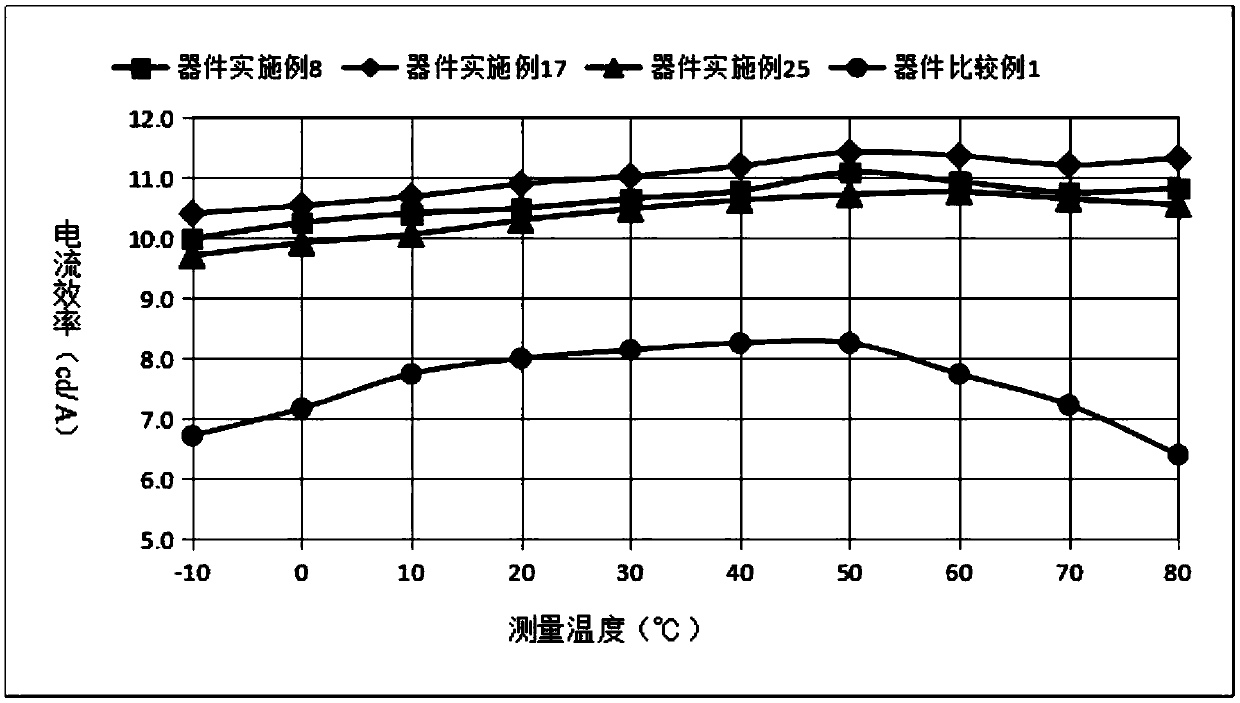Boron-containing organic electroluminescent compound and application thereof on organic electroluminescent devices
An electroluminescence and compound technology, which is applied to boron-containing organic electroluminescence compounds and their application in organic electroluminescence devices, can solve the problem of efficiency roll-off, difficulty in high exciton utilization, high fluorescence radiation efficiency, low efficiency and low efficiency. state radiation transition rate and other issues, to achieve the effect of small energy level difference and avoid aggregation
- Summary
- Abstract
- Description
- Claims
- Application Information
AI Technical Summary
Problems solved by technology
Method used
Image
Examples
preparation example Construction
[0063] Preparation of Intermediate A
[0064] Preparation of Intermediate A-1:
[0065]
[0066] In a 250mL three-neck flask, under nitrogen protection, 0.02mol reactant D-1, 0.03mol reactant E-1, 0.05mol sodium tert-butoxide, 0.2mmol Pd 2 (dba) 3 1. Add 0.2mmol tri-tert-butylphosphine into 150mL toluene, stir and mix, heat to 110-120°C, reflux for 12-16 hours, take a sample and spot the plate, it shows that there is no reactant D-1 remaining, and the reaction is complete; naturally cool to room temperature , filtered, the filtrate was rotary evaporated under reduced pressure to no fraction, and passed through a neutral silica gel column to obtain intermediate F-1; ESI-MS (m / z) (M+): The theoretical value was 228.13, and the measured value was 227.16.
[0067] In a 250mL three-neck flask, under nitrogen protection, add 0.01mol intermediate F-1, 0.0005mol palladium acetate, 0.02mol PhCO 3 Bu-t, add 100mL dimethyl ether to dissolve, heat to 150°C under microwave, and react...
preparation Embodiment 1
[0120] Preparation Example 1: Synthesis of Compound 1:
[0121]
[0122] Add 10mmol of intermediate A-1 and 10mmol of intermediate B-1 into 75mL of toluene, reflux reaction at 45°C for 2h under stirring conditions, and remove the water and solvent in the reaction mixture by rotary evaporator, The residue was cooled to room temperature, and purified by column chromatography with dichloromethane and cyclohexane with a volume ratio of 1:3 to obtain the target intermediate C-1; ESI-MS (m / z) (M+): The theoretical value is 500.30, and the measured value is 500.14.
[0123] Add 10mmol of intermediate C-1 to 300mL of toluene, pass nitrogen gas into the reaction system for 30min, and add 0.15mmol of Pd respectively 2 (dba) 3 , 0.6mmol 2-bicyclohexylphosphine-2',6'-dimethoxybiphenyl and 20mmol t-BuONa, under the protection of nitrogen, reflux reaction at 80°C for 18h, after the reaction, the reaction mixture was filtered under reduced pressure, Take the filtrate, and carry out chr...
preparation Embodiment 2
[0125] Preparation Example 2: Synthesis of Compound 14:
[0126]
[0127] The preparation method of compound 14 is the same as in Example 1, except that intermediate A-1 is replaced by intermediate A-2, and intermediate B-1 is replaced by intermediate B-2; elemental analysis structure (molecular formula C 26 h 17 BF 2 N 2 O): theoretical value C, 73.96; H, 4.06; B, 2.56; N, 6.63; tested value: C, 73.94; H, 4.04; B, 2.52; N, 6.60. ESI-MS(m / z)(M + ): The theoretical value is 422.14, and the measured value is 422.10.
PUM
| Property | Measurement | Unit |
|---|---|---|
| thickness | aaaaa | aaaaa |
| thickness | aaaaa | aaaaa |
| thickness | aaaaa | aaaaa |
Abstract
Description
Claims
Application Information
 Login to View More
Login to View More - Generate Ideas
- Intellectual Property
- Life Sciences
- Materials
- Tech Scout
- Unparalleled Data Quality
- Higher Quality Content
- 60% Fewer Hallucinations
Browse by: Latest US Patents, China's latest patents, Technical Efficacy Thesaurus, Application Domain, Technology Topic, Popular Technical Reports.
© 2025 PatSnap. All rights reserved.Legal|Privacy policy|Modern Slavery Act Transparency Statement|Sitemap|About US| Contact US: help@patsnap.com



